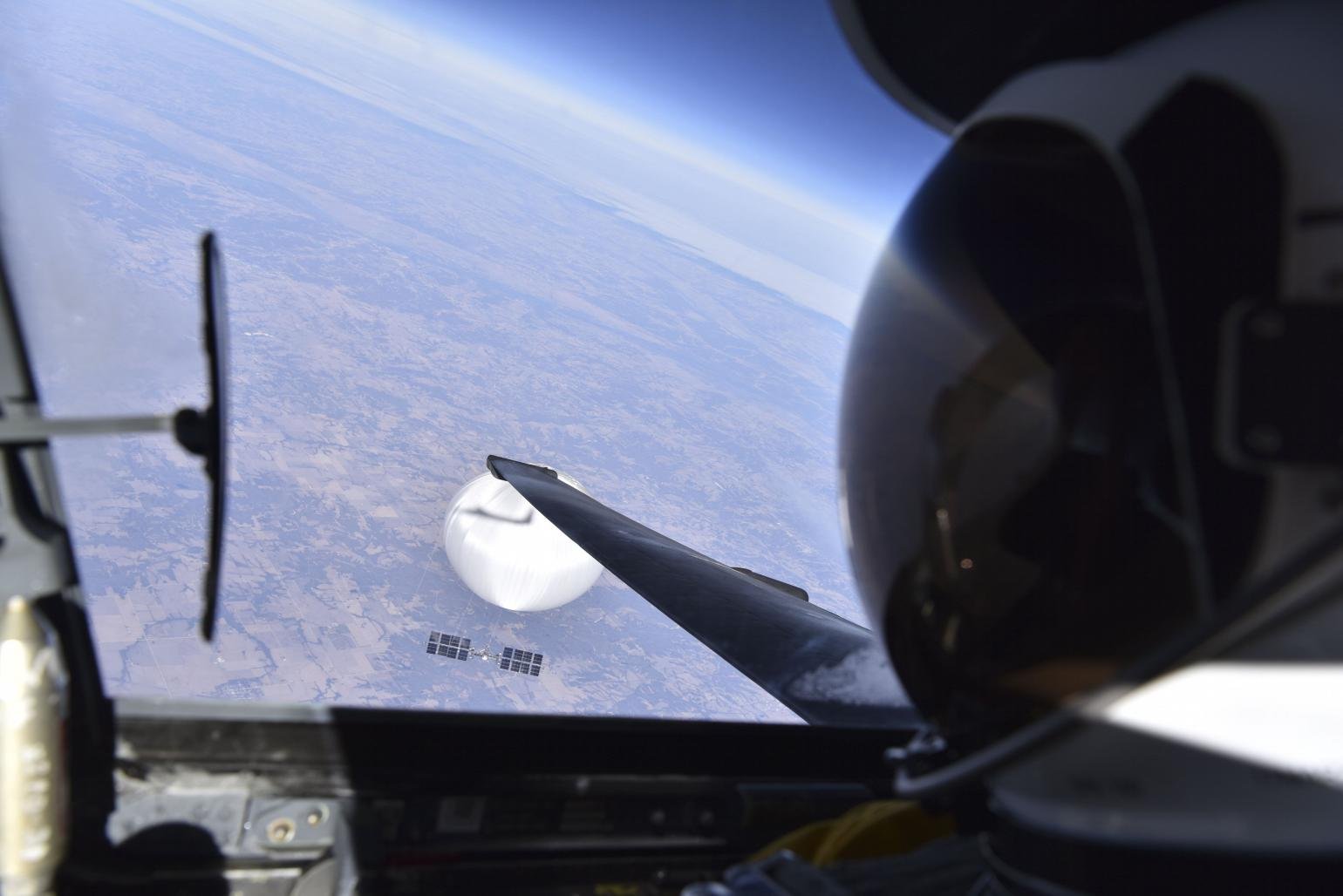A selfie captured by the pilot of a U-2 spy plane as it flew past a suspected Chinese surveillance balloon that recently passed over the U.S. before being shot down off the South Carolina coast has taken the internet by storm.
On Wednesday, it was confirmed that the photograph was authentic by Pentagon Deputy Press Secretary Sabrina Singh, who answered a question about the photo from CNN Pentagon correspondent Oren Liebermann.
However, the photo had already achieved near-legendary status well before the Pentagon confirmed that it was a real image of the Chinese surveillance airship seen from the cockpit of a spy plane. With a lower resolution version already having seen wide circulation online over the last several days, additional details have emerged about the photo that makes it all the more interesting.
Here are five of the most interesting facts about the iconic image that you may have missed.
Where Did the Photo First Leak?
Although CNN was the first to report the existence of the spy plane selfie, the earliest known publication of the image online appears to have been by British aviation journalist Chris Pocock, who is regarded as one of the world’s leading experts on the U-2 spy plane and its history.
As a former defense editor for Aviation International News, Pocock has been called “today’s foremost authority on the U-2 and its development” by the CIA’s lead historian, and an entry at the Smithsonian National Air and Space Museum calls him “the living expert historian on the U-2 program.”
“Intercepting stratospheric balloons is a new mission for the U-2,” Pocock wrote in a post that accompanied the image at his website, Dragon Lady Today, on February 21. Pocock added that the U-2’s assistance in gathering information on the Chinese surveillance ballon “proves again just how versatile the Dragon Lady can be – and how essential it is to retain a manned high-altitude reconnaissance capability.”
Where and When Was the Image of the Balloon Captured?
The spy plane selfie was taken on February 3, 2023, and according to most media outlets, the location had been over the midwestern United States.
However, there is a bit more information we can gather about the likely location of the balloon at the time the image was captured. Several open-source intelligence Twitter accounts like TieDyeIntel and TheIntelFrog relied on publicly available information to help determine the balloon’s path as it passed over the Midwest, and eventually further southeast toward the Carolinas.
Before it was shot down near Myrtle Beach, South Carolina, several sightings of the balloon were made over North and South Carolina on the morning of February 4. One day earlier as the U-2 spy plane buzzed the balloon, a similar spate of sightings occurred as it passed over Missouri, southern Illinois, southwestern Kentucky and Tennessee.


Based on the known sightings of the balloon, available weather data matching the clear conditions seen in the photograph, and the balloon’s suspected flight path as it transited the U.S. in early February, what does that tell us about where the photo might have been taken?
With additional help from the geolocation of terrain features, Mastodon user @benelsen says he believes the selfie was probably taken in airspace close to Washington, Missouri, an argument he supported with images he shared on his account.
Who Was the Photographer?
In the photo, the visor on the U-2 pilot’s helmet can be seen as the balloon and its dangling payload can be seen through the window in the distance.
However, the pilot of the aircraft was not the one who captured the image. Unseen from the angle the photo was taken, a second individual in the adjacent seat was actually the photographer in this instance, according to ABC News.
Wait a minute… isn’t the U-2 a single-seat aircraft?
Although that’s true in most cases, the aircraft that performed the flyby of the Chinese balloon on February 3 was reportedly a two-seat trainer aircraft known as a TU-2S, the likes of which are flown on training missions out of Beal Air Force Base, California, home of the 9th Reconnaissance Wing where the USAF’s U-2s are based.
Currently, there are five of the two-seat TU-2S aircraft that are used for such missions. Arguably, if one of these special U-2s had not been flown for the mission (allowing a second set of free hands in the cockpit), the now-famous selfie might not have been obtained at all.
Although the two-seat version of the aircraft in use helps explain how the photo was captured, the actual identity of the pilot visible in the photo, as well as the photographer, still remains undisclosed.
You Can See the U-2’s Shadow on the Balloon… and That’s Not All
From the angle the photo was taken, the Chinese balloon is visible off the U-2’s right wingtip as the aircraft circles it from above. Look closely, and you’ll also see the shadow of the plane cast against the bright reflective surface of the balloon as the U-2 flew between it and the Sun.


As an added bonus, an even closer look at the photo—this time through the visor on the pilot’s helmet—appears to reveal his profile. In fact, it even appears that his nose is visible in the faint silhouette that emerges in the higher-resolution images released by the DoD on Wednesday.
This May Be the First Selfie From a U-2 Spy Plane… and It Could Be the Last One
Since entering service back in the mid-1950s, the U-2 has seen a range of missions over the decades, making it one of the most unique aircraft ever developed by the United States. Having flown reconnaissance missions over the Soviet Union during the height of the Cold War, it seemed fitting that these legendary aircraft would find renewed purpose in intelligence gathering on a suspected Chinese surveillance aircraft as it passed over the United States.
Arguably, the iconic image captured as the U-2 pilots flew past the balloon on February 3 is the first selfie captured from one of these high-altitude aircraft. In likelihood, it may also be the last time it happens.
Now in its sixth decade in operation, today the U-2 still sees service, although flybys the likes of those it made of the Chinese airship earlier this month represent a rare occurrence, especially in terms of missions carried out for reconnaissance purposes over the United States.
Although originally set to retire in 2019, the U-2 currently remains part of the US Advanced Battle Management System. However, in the years ahead, the famous spy plane is slated for replacement by the UQ-2 (also known as the RQ-X), a spy plane proposed by Lockheed Skunk Works that combines the modernized U-2 aircraft with lower observability and enhanced endurance, according to a statement provided to Military.com by Lockheed’s U-2 strategic development manager Scott Winstead.
So it seems unlikely that the U-2 will continue to perform very many missions over U.S. soil that would allow any additional selfies like the one captured on February 3, although in this era of social media and smartphones, the impressive image reminds us that there is a first—and perhaps a last time—for just about everything these days.
More importantly, the U-2’s vital role in the collection of information on the Chinese balloon provides a reminder that it is an aircraft that has truly withstood the test of time, and one that will likely continue to remain an asset until the arrival of the UQ-2 in the years ahead.
Micah Hanks is the Editor-in-Chief and Co-Founder of The Debrief. He can be reached by email at micah@thedebrief.org. Follow his work at micahhanks.com and on Twitter: @MicahHanks.

